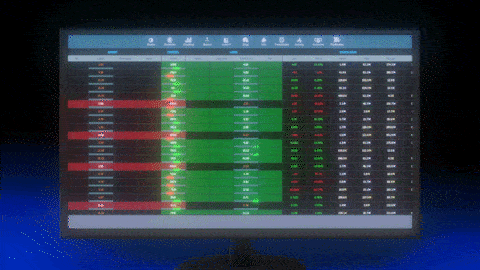Happy Friday, Evolvers!
We made it through the first trading week of 2023 — hopefully with some wins and without any major losses!
Tesla Inc.’s (NASDAQ: TSLA) troubles continued this week as weak delivery numbers sent the stock down another 7%.
The world’s most valuable EV company remains near the top of my watchlist. I don’t want to chase the downside, but playing a confirmed bottom in the near future could be intriguing.
Additionally, the ‘crypto contagion’ is spreading like wildfire (just as I predicted)…
On Wednesday, Huobi exchange and Tron DAO founder Justin Sun told employees he plans to start paying them in Tether (USDT) or USD Coin (USDC), rather than fiat currency.
Considering my view that Tether is a glorified Ponzi scheme, I think this is a massive red flag that could have wide-ranging effects on the entire crypto market.
Then, on Thursday, Silvergate Capital Corp (NASDAQ: SI) — the crypto sector’s main “bank” — plunged more than 40% after disclosing massive fourth-quarter withdrawals.
Don’t ignore the storm brewing in cryptocurrency! I’m still holding March puts on the ProShares Bitcoin Strategy ETF (NYSEARCA: BITO).
But for now, it’s time for our first Friday Q&A of 2023! Keep reading and I’ll answer your burning questions for the new year…
“How do you decide when to take profits on a green options position?”
One of the most difficult aspects of options trading is timing your exits…
Knowing when to take profits, when to hold your entire position, and when to cut a play that’s going against you are crucial skills for any aspiring options trader.
The first step is to have a clear entry and exit plan.
Decide beforehand at what price you’ll sell and immediately close the position when the stock hits that level.
Don’t get greedy and think you can squeeze a few more % out of a winning play that’s hit your target. If you fall into that trap, it could quickly turn into a losing play.
If I had a dollar for every time I’ve seen a contract up 100%+ intraday only to end the afternoon deep in the red … I’d have a few extra million in my trading account!
Proprietary Algorithm Forecasts The 20 Hottest Stock Movers … Before The Market Opens!

Traders have seen stocks move 35%, 72% and 275%+ within a day, by replacing shady “mainstream” watchlists
This is why you’ve gotta be quick to take profits and even quicker cutting losses. Options are unforgiving … the price action can turn on a dime and erase mountains of gains in minutes.
In general, I aim for 100% gains on weekly options. If I can double my principal investment intraday or overnight, that’s a HUGE WIN!
If you truly believe the trade could keep going — but you want to protect your initial investment — there’s another trick you could try…
If you’re up 100% on a play, you can sell half of your contracts to make the trade risk-free from that point forward.
The remaining money in the position will be ‘house money’, so to speak. If the trade goes against you from there, you’ll lose your profits but you’ll also protect your initial investment.
Ultimately, the ideal time to exit an options play comes down to the specific trade, ticker, and chart.
But hopefully, these tips can help you identify that time on your own in the future.
“I never know what to study, I usually just stare at charts and read the news. How can I improve my study habits in 2023?”
There’s no single list of ultimate study habits. Like anything else in trading, you have to find what works for you.
But in the meantime, I’ll tell you what works for me…
I set time aside in the afternoons and evenings to study. I find that studying at these times has two benefits:
- The market is closed (so I’m not distracted by intraday trading)…
- My kids are asleep (so my study environment is quiet)…
Then, I mark up the daily and weekly charts on stocks I’m watching. These longer timeframes are the best charts for identifying key levels.
Now, you might be wondering…
Where do you draw your lines? How do you chart an uptrend (or downtrend)? What determines which price levels are critical?
- Draw horizontal lines at support and resistance levels for a visual placeholder of the stock’s current trading range.
- Draw vertical lines at key moments in the chart’s history to help you see the visual story of a stock’s past big moves.
- Draw diagonal trendlines under uptrends and downtrends to see the general direction of recent price action.
Charts are illustrations of the trading sentiment behind a stock.
By drawing these indicators in, you’ll have a clear visualization of the important levels and trends to watch.
Then, you can use these indicators to form playable ranges for your trades.
Final Thoughts
Have a great weekend, Evolvers!
Take the study tips I mentioned today and use them over the weekend.
REMEMBER: Great traders get no days off!

